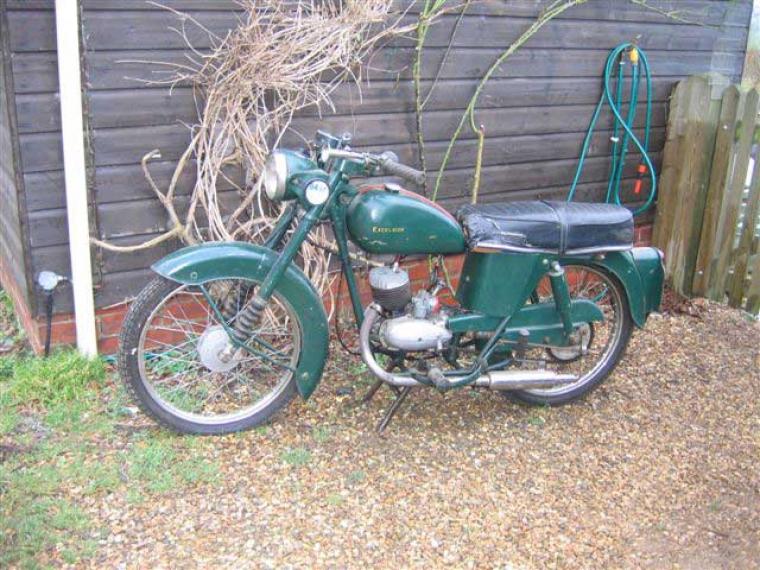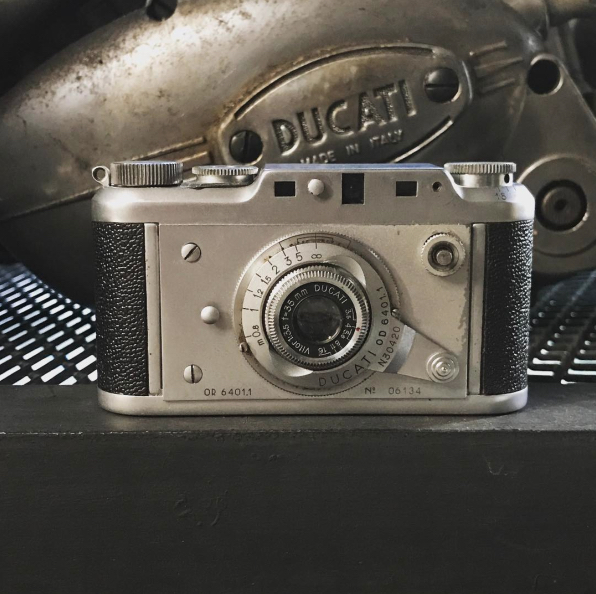
When I was a very young man and the possessor of a cheap-and-cheerful 98cc Excelsior motorcycle (now to be found in a museum) I would gaze for hours into the window of a motorcycle shop in my local town of Bolton in Lancashire.

Behind the glass was the pinnacle of my 16-year-old desire (I always had simple tastes and was a late developer): a shiny chromey Ducati motorcycle with a red tank. I can’t remember much about it after all these years, but I suspect it was a single-cylinder 200cc Ducati Elite. At any rate, it was a gem of polished aluminium and chrome, with dropped handlebars and rear-mounted footrests, finished in Italian racing red. The vibes that came out of that humble shop window were indeed heady.
I would cheerfully have sold my grandmother for a day astride this fantastic beast. In retrospect, though, it was probably as unreliable as hell with an electrical system that would splutter to a halt at the first sign of a shower.
But it was Italian, it was shiny and decidedly sexy. I wanted it fiercely. Although I wasn’t to know at the time, it was the catalyst for my later career writing about and promoting motorcycles in Britain.
All those powerful ccs were a disturbing fantasy when viewed from the staid dual seat of the spluttering Villiers-powered two-stroke, two-speed Excelsior, the very antithesis of Italian flair. It was love at first sight, although unrequited, when I met the Ducati. I was in severe danger of succumbing to mechanophilia. The only thing that saved me was a lack of cash.
What I didn’t realise at the time, though, was that Ducati also made cameras. Rangefinder cameras, albeit half frame and not full-frame. If I had, I would have wanted one of those as well. Forget the German-made M3, not that I could have remotely found the necessary £125 for a Leica — more or less the same price as the much-ogled Ducati motorcycle. No, it would have been a Ducati camera for me. At the time I didn’t know the difference between half frame and full frame but the name was exciting.

With the benefit of hindsight, I now realise that the Ducati camera could have been just as exciting to own as the motorbike. Every outing might have been an adventure. Both Italian motorcycles and cars then had a rather unenviable reputation for unreliability, particularly in the electrical department. And British cars and motorcycles were, if anything, even worse. This has changed, I feel sure, or we would see more Ferraris and Lamborghinis on the backs of AA trucks.
I suspect that at the time my two-wheel needs would have been much better served by German products — by a less flamboyant but more sensible BMW R27 two-fifty, for starters. And, of course, the Leica M3 to massage my nascent interest in photography. But I was 16 and didn’t know much about such things; the glister was all that mattered. Nor did I have more than ten shillings in my pocket. Yet all that glittered in that Bolton dealership was indeed gold to my young eyes.
Inspiration for this article came from LeicaRumors and Japan Camera Hunter
_______________

Further to Macfilos’ Ducati article some of you might be interested in the following links relating to the 1940s Ducati ‘Kriegsmarine 10×80 Observation binocular’ .
The binocular was manufactured by Ducati to the original WW2 Zeiss Jena design / Kriegsmarine specification and with a grey paint finish.
http://www.binoculars-cinecollectors.com/BIMAR-Ducati-Appendix2.pdf
http://www.binoculars-cinecollectors.com/html/body_unusual_page_6.html
Unfortunately many similar vintage observation binos, including WW2 Japanese instruments, have been irrevocably ruined.
Polished to hell, mounted on non-original Chinese gimbals and non-contemporary tripods, they satisfy yuppie demand for patio and drawing room trophies.
Try Googling ‘polished observation binoculars / images’ … to witness surviving but over-restored instruments destined for use as ‘cool patio furniture’.
And a walk down the Kings Road will often reveal such monstrosities displayed in dealers’ shop windows.
I’ve actually seen a scarce and collectable Ducati 10×80 observation binocular listed last week … resplendent (not) in its highly polished non-original state.
Sympathetic restoration and conservation is fine but over zealous mutilation makes me shudder.
Unfortunately those who buy such over-restored behemoths likely have no idea about correctly setting-up the instruments – and the 8mm ‘exit pupil’ of a 10×80 (which very few observers can use to advantage) might mean absolutely nothing to them.
Furthermore, those who buy them are likely unaware that a modern Canon 10×42 Image Stabilised binocular costing a fraction of the price will provide a much brighter and more comfortable view.
But it isn’t about practicality … it’s about impressing friends as they all ‘swill white wine from rented glasses’ ** during their summer evening patio parties.
Ignorance is bliss!
Regards
dunk
** a Will Self original phrase.
Great memories Mike, but you might not be right about being better served with the German made gear…
According to Robert Pirsig in "Zen and the Art of Motorcycle Maintenance", the less reliable (in his case, British Triumph) was better to run than his friend’s BMW. This was because the one who constantly has to tinker, to coax, and to mend, learns an awful lot more about their kit, themselves and life in general than the man who buys into the shaft driven, electronics infested, take it to the specialist for the occasional service… contemporary Beemer.
Mind you, there are scant British camera makers, still making cameras and even fewer British motorcycle manufacturers, and the Italians and German manufacturers are only still around by cheating, most precision manufacturing being taken over by computer guided tools, overseen i.e. turned on and off, by teenage Chinese craftsladies.
So it would seem that the wisdom of the mobs, the populist vision, was that reliability was king, and tinkering was dead.
Further to your previous piece on getting old Mike, is perpetual gloom another facet?
When I was 16 I had a choice between a 0cc ‘Shank’s Mare’ or a pedal powered Raleigh which I had inherited from my older brother. The only camera I knew was my father’s Baldina or the Box Brownie which my mother had, but never used. I was a motor sport fan and followed the sport on two wheels and four. Murray Walker broadcasting from the Isle of Man TT is a particular memory. The name that sticks in the memory is MV Agusta thanks to the feats of Surtees, Agostini and others. Just like Ferrari and Maserati in four wheel racing the Italian name seemed impossibly alluring and sophisticated. I can fully understand the allure of the Ducati for your 16 year old eyes.
Moving on to the camera, a friend of mine has some very nice Italian cameras. I cannot recall whether he has the lovely Ducati Sogno. What I do know is that, according to Collectiblend, the Ducati camera fetches the same amount at auction today as the Leica M3 (Double Stroke with Lens). The Ducati is relatively rare compared to an M3, of course, but it is also an alluring item which looks most attractive , just like the Ducati bikes. Those who measure things by utility will not understand, of course. Most collectors will understand, however.
William
Ah, of course I remember Murray Walker’s commentary from the Isle of Man. I was a regular at the TT races, but probably a few years earlier, in my guise as reporter for Motor Cycle magazine. I spent most time at the races in the press office over the grandstand at the start/finish line. And during lulls it was my job to go down to the paddock to get snippets of gossip and opinion from the competitors — including Agostini, Hailwood, Surtees, Read and the others. The Island was a highlight of the sporting year and most of the magazine’s editorial staff would decamp from Waterloo to the Sefton Hotel on Douglas Promenade. Wonderful weeks in retrospect.
Mike, way back in 1968 one of my work colleagues had a Ducati camera. He had been given it by his father. I can still remember handling it and thinking that it felt rather fragile and delicate- a contrast to the very robust Leica 3A which I had recently acquired. The colleague had no interest in photography so I guess the Ducati was sold or is still moulders in a drawer somewhere in southern England.